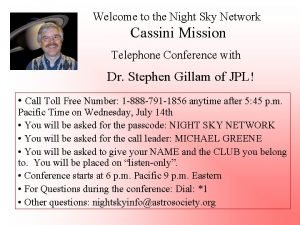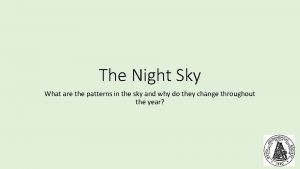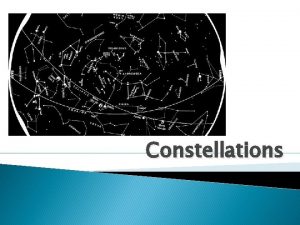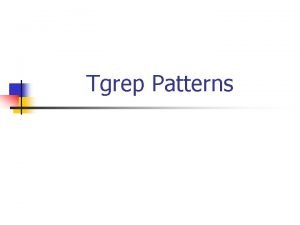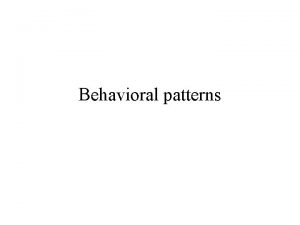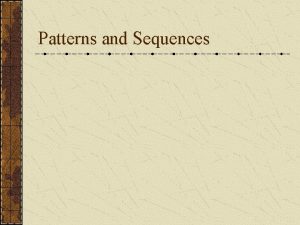the Night Sky Historically patterns in the sky

















- Slides: 17

the Night Sky

Historically, patterns in the sky helped people navigate and keep time. Egyptian skychart

The Sky Orion Stars appear in fixed patterns called constellations. (Planets, “wanderers, ” appear to move. )

Note that the stars that make up constellations are at different distances. • What we see is their projection onto a virtual “Celestial Sphere. ”

The Earth’s rotation makes the sky appear to revolve around us.

Polaris: does not appear to move because it's aligned with the Earth's axis.

Seasonal Constellations: stars closer to the equator will rise and set and we will see different constellations through the year.

Axial Tilt: the Earth’s axis is tilted 23. 5 o from the plane of the Earth’s orbit. So the Sun and planets appear to move along a tilted line in the sky

The Seasons And when our hemisphere is tilted toward the Sun, we have summer; away, we have winter. Summer Solstice: Longest day (Sun at highest point) Winter Solstice: Shortest day Equinoxes: Equal Night/Day


Precession: Long Term Changes Over 26, 000 years the Earth’s axis moves in a complete circle. (Polaris was not always the pole star. )

The Motion of the Planets The planets wander on the sky along the ecliptic: mostly West to East but occasionally backwards – retrograde motion


Ptolemy’s model (~140 CE) used 80 circles. -this didn't explain retrograde motion.

Heliocentric Model: Copernicus felt a Suncentred system could explain the motion more simply.

Heliocentrism and Retrograde motion

Galileo Galilei Galileo: did not invent the telescope but was the first to study astronomy with it (1609).
 Ancient oriental countries physical education
Ancient oriental countries physical education Historically american sign language is related to
Historically american sign language is related to Criteria for significance
Criteria for significance Historically, realignments occur
Historically, realignments occur Geometric ray model
Geometric ray model Night sky network
Night sky network There are times when the night sky glows summary
There are times when the night sky glows summary Dating serves several important functions that include:
Dating serves several important functions that include: Closed patterns and max-patterns
Closed patterns and max-patterns Silent night holy night all is calm all is bright
Silent night holy night all is calm all is bright Symbols of night by elie wiesel
Symbols of night by elie wiesel Cong thức tính động năng
Cong thức tính động năng Thế nào là mạng điện lắp đặt kiểu nổi
Thế nào là mạng điện lắp đặt kiểu nổi Lời thề hippocrates
Lời thề hippocrates Dạng đột biến một nhiễm là
Dạng đột biến một nhiễm là Vẽ hình chiếu đứng bằng cạnh của vật thể
Vẽ hình chiếu đứng bằng cạnh của vật thể Bổ thể
Bổ thể độ dài liên kết
độ dài liên kết





